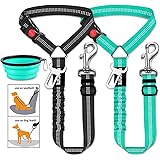Pets are beloved members of our families, providing us with love, companionship, and joy. However, just like humans, pets can also experience accidents and illnesses that require medical attention. This is where pet insurance comes in – an invaluable tool that can help alleviate the financial burden of unexpected veterinary bills.
If you’re considering investing in pet insurance for your furry friend, it’s important to understand how it works and what it covers. To help you navigate the world of pet insurance, we’ve put together the ultimate pet insurance guide with everything you need to know.
What is Pet Insurance?
Pet insurance is a type of insurance that helps cover the costs of veterinary care for your pet. Just like health insurance for humans, pet insurance can provide coverage for accidents, illnesses, and preventative care such as vaccinations and annual check-ups. With pet insurance, you can rest assured that your pet will receive the medical care they need without breaking the bank.
Types of Pet Insurance Coverage
There are several types of pet insurance coverage available, including:
1. Accident Coverage: This type of coverage helps pay for medical expenses resulting from accidents such as broken bones, lacerations, and ingestion of foreign objects.
2. Illness Coverage: Illness coverage helps cover the costs of treatment for common illnesses such as infections, cancer, and chronic conditions.
3. Wellness Coverage: Wellness coverage helps cover preventative care expenses such as vaccinations, flea and tick prevention, and annual check-ups.
4. Dental Coverage: Dental coverage helps cover the costs of dental procedures such as cleanings, extractions, and treatments for dental diseases.
5. Behavioral Coverage: Behavioral coverage helps cover the costs of therapy and training for behavioral issues such as anxiety, aggression, and compulsive behaviors.
Choosing the Right Pet Insurance Plan
When choosing a pet insurance plan, it’s important to consider the following factors:
1. Coverage Limits: Make sure to review the coverage limits of the plan, including annual limits, per-incident limits, and lifetime limits to ensure that your pet’s medical expenses are adequately covered.
2. Deductibles: Consider the deductible amount that you’re comfortable with paying out of pocket before the insurance coverage kicks in.
3. Reimbursement Levels: Look at the reimbursement levels offered by the insurance plan, including percentages and reimbursement methods (reimbursement based on actual veterinary bills vs. reimbursement based on a predetermined schedule of benefits).
4. Exclusions: Be aware of any exclusions or limitations in the insurance plan, such as pre-existing conditions, hereditary conditions, and breed-specific conditions.
5. Provider Reputation: Research the reputation and customer reviews of the pet insurance provider to ensure that they have a good track record of providing reliable coverage and excellent customer service.
Final Thoughts
Pet insurance can provide peace of mind knowing that your furry friend will receive the medical care they need without the added stress of financial burden. By understanding the types of coverage available and choosing the right insurance plan for your pet’s needs, you can ensure that your pet remains happy and healthy for years to come.










